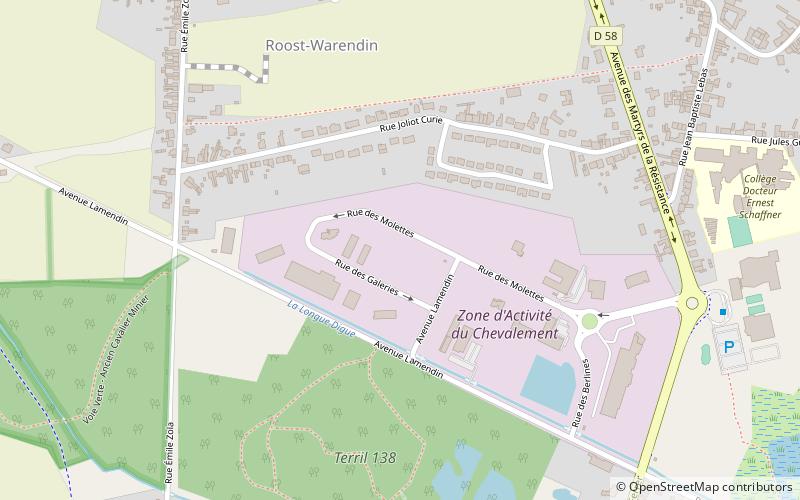Puits n° 9, Roost-Warendin


Facts and practical information
The Compagnie des mines de l'Escarpelle was a mining company that exploited coal in Roost-Warendin, Leforest, Pont-de-la-Deûle, Dorignies, Courcelles-les-Lens and Auby in the Nord-Pas-de-Calais mining basin, straddling the Nord and Pas-de-Calais departments. On June 13, 1846, Mr. Soyez drilled a hole in the hamlet of l'Escarpelle in Roost-Warendin, in order to discover coal beyond the Aniche concession. The drilling being a success, a company was founded on February 4, 1847, it applied for a concession on June 19 and began sinking its first pit the same year in Roost-Warendin.
The pit began production in 1850. Sinking of pit no. 2 began in May at Leforest, Pas-de-Calais. A decree dated November 27, 1850 granted the Escarpelle concession over a surface area of 4,721 hectares. Water ingress was a major problem for the sinking of the shafts, so pit no. 2 was only operational in October 1853. Pit no. 3, begun at Pont-de-la-Deûle, a hamlet of Flers-en-Escrebieux, in May 1856, did not begin operation until July 1859. It is the same for the pit no 4 - 4 bis, whose sinking started on July 1, 1865 in Dorignies, hamlet of Douai, is made possible only with the first use in the North of the Kind-Chaudron process. Mining did not begin until 1871 - 1872. Pit no. 5, located in Dorignies like the previous one, started in 1875 and was only productive in 1879. On the other hand, it took less than two years for pit no. 6, opened in 1884 in Leforest, to be productive.
In 1880, the Compagnie de l'Escarpelle bought the Courcelles-lez-Lens Company and its pit, which had been started in October 1861. It became pit no. 7. A No. 7 bis pit was added in 1902 and production started in 1906. The No. 8 pit, which was opened in Auby in January 1906, did not come into production until 1910. The No. 9 pit, started in Roost-Warendin in 1909, came on stream the same year. The First World War led to the destruction of all the surface installations, which were rebuilt, sometimes in a completely different style, as in pits no. 2 and 4 - 4 bis. The Company started its last headquarters in 1923, north of Leforest. When the No. 10 pit was put into operation, the No. 6 pit provided ventilation.
The Compagnie des mines de l'Escarpelle was nationalized in 1946 and, together with the Compagnie des mines d'Aniche, became part of the Douai Group. Over the years, pit no. 9 became the most modern of the former company, and was the last to close in the north, and the second to last in the mining basin. The last sedimentation tanks were removed on October 26, 1990, a few weeks before those in pits #9, 9 bis and 10. Although the majority of the installations have been completely destroyed, and the spoil heaps exploited, there remains the headframe of pit no. 9, without its false square, and buildings spread over the sites of the former pits no. 3, 5, 7 - 7 bis, 8, 9 and 10. Some of the dumps, such as those of pit no. 7 - 7 bis, and that of pit no. 8, have been entirely exploited, but the dumps of pits no. 1 and 10 have been preserved.
Roost-Warendin
Puits n° 9 – popular in the area (distance from the attraction)
Nearby attractions include: Musée de la Chartreuse, Lambres-lez-Douai, Cuincy, Sin-le-Noble.











